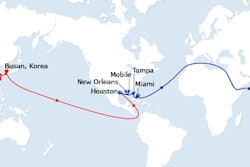
Transplace has acquired Lanehub, a cloud-based platform that enables shipper-carrier collaboration by automatically identifying and connecting companies with complementary freight lanes to save on shipping expenses. The software focuses on matching recurring freight lanes on a consistent basis to reduce transportation cost, increase fleet revenue and improve overall carrier service and performance.
“This is a major milestone for our company because of how much more we can do as part of Transplace, a true leader in the global logistics industry,” says Mark Hackl, founder and CEO of Lanehub. “With an industry leading technology platform and $9 billion in freight under management, Transplace opens the door to an unrivaled network of carriers and shippers for unsurpassed freight lane collaborations and transportation cost reductions. We have high expectations about the opportunities ahead for our teams and customers as we join the Transplace organization.”
Read Next: Phoenix Logistics Contracts Array Technologies
The acquisition is effective immediately and benefits both Transplace's and Lanehub's customers by giving them access to transportation technology and strategic management through the resources of the newly-combined organization.
“The strategic acquisition of Lanehub reinforces our mission to offer our customers the most advanced technologies, giving them a competitive advantage in the marketplace,” says Frank McGuigan, chief executive officer of Transplace. “Lanehub’s customer base and experience in the consumer-packaged goods, food, retail, manufacturing, and automotive industries are highly complementary to our business,” added McGuigan. “By joining our software solutions, we can create incredible opportunities to connect and convert traditional one-way moves into more collaborative round trips, significantly reducing empty miles and poor asset utilization. Unifying our teams and technologies is a win for all involved.”



















